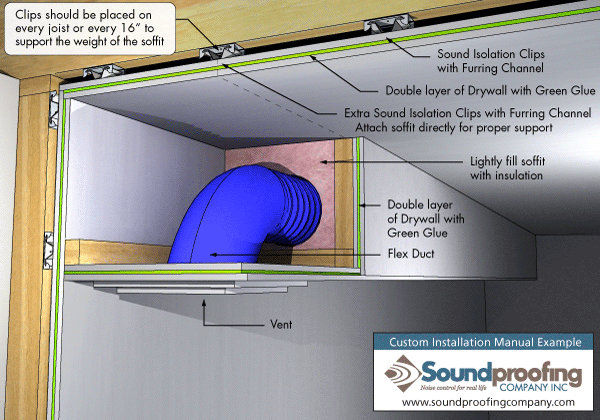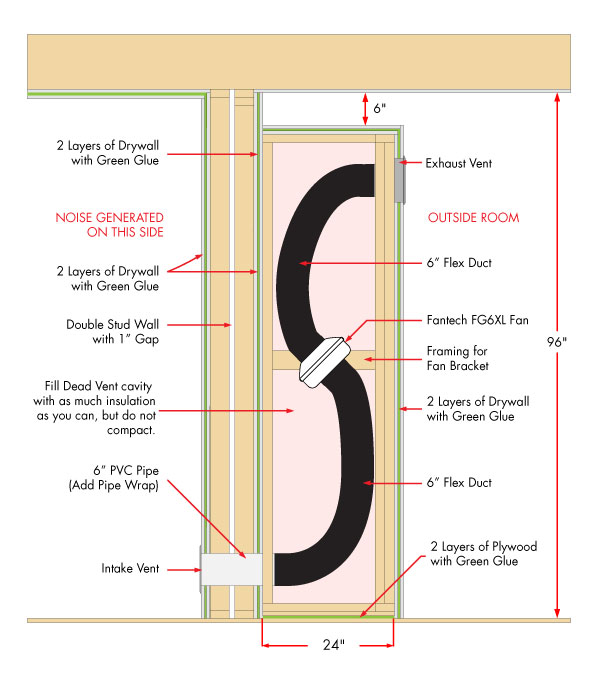One word of caution: There is a common internet myth that flex duct will solve all of the issues with the noise. People feel great about cutting large 6″ diameter holes in the now soundproofed ceiling, exposing the original framing behind the layers of ceiling drywall. They don’t worry because that 6″ diameter hole has insulated flex duct in the joist cavities. And they “have incorporated a bend or two” in the flex, so all sound problems are taken care of. Nothing could be further from the truth.
The flex duct doesn’t have nearly enough absorptive material to deal with sound waves. Sound will simply blast through flex duct and keep traveling to other parts of the building. There is a great deal of false soundproofing hope associated with this method. Don’t get me wrong. Flex duct has a distinct role in sound isolated vent designs, however, the flex is combined with more standard insulation to create a significant muffler.

These ducts fit nicely in a room’s soffit.
There are times when a soffit muffler isn’t practical. In these cases, a Dead Vent might be more appropriate:

The Dead Vent can be installed outside of the sound room, perhaps in a closet or utility room. Between the Soffit Muffler and the Dead Vent, most ventilation isolation scenarios can be accommodated.
We have manuals available to discuss this in greater detail: Soundproofing Manuals (SIM)